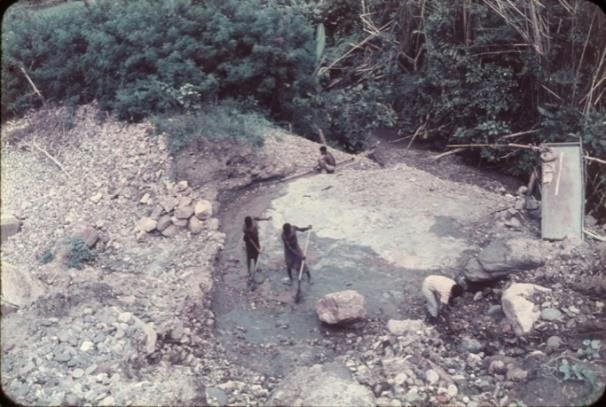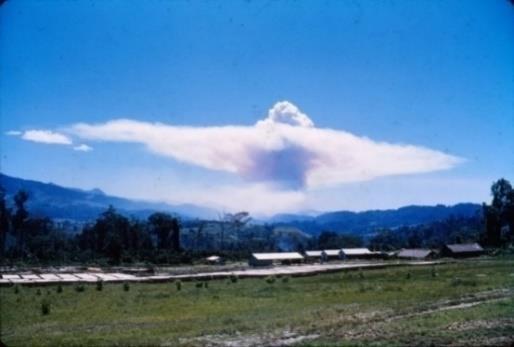
3 minute read
Post-1960 Forestry
The final logging operation in the Kauli Creek area in 1960 was about as disastrous as it ever was, with the NGG tractor operator inadvertently (we trust) knocking out a few trees from Anderson’s Plot and leaving a main road in a non-accessible condition after its use as a log loading ramp.
The ancient and huge Araucarias, towering over the understory and often growing in precarious ridge-top locations, were valuable trees. To fell them was dangerous work, even for a skilled tree-faller. The cutting tools available for this work in 1960 were axes and crosscut saws. In the case of New Guinea Goldfields’ crew, the fallers were New Guineans paid no more than a few dollars a month plus keep.
Advertisement
Some trees were lost irretrievably by slipping into deep valleys, yet although these were unaccounted for, the number lost was relatively small. So was the number of accidents in the logging crews.
For all its difficulties in this most uninviting environment, the saw-milling operation in Wau as operated in 1960 was probably a commercial success. It would only have been better to have been run by the Forestry Department, which at that time had the surplus staff capacity to do so as its Lae and Kerevat saw-mills closed.
Post-1960 Forestry
Forest plantations burn at Bulolo seen from Wau forest station, c.1961. Photo Credit D Harries.
The first plantation burn on the northern site of the Bulolo River took place on 29 September 1960. It was a tricky compartment to burn as it was spread around three sides of the new Forest Station site, known as Cedar Creek. It was known as Compartment 1, Izzy Dizzi Creek Logging Area. Wandumi land adjoined this area on the eastern side, and south of the Forest Station site. The vehicle road to Wandumi ran along this southern boundary and crossed Cedar Creek at a fossiliferous site.
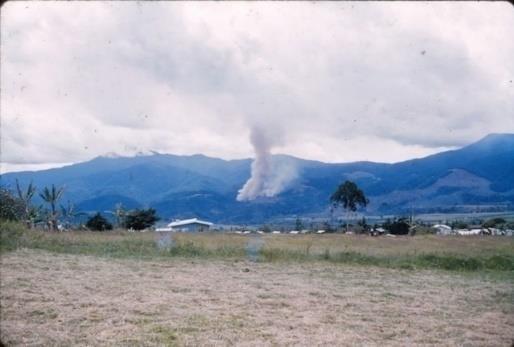
Plantations burn in Beenleigh Creek, seen from Wau 1961. Photo Credit D Harries.
Bulolo forestry burn seen from Wau forest station, c.1962. Photo Credit Des Harries.
A five-chain wide belt of rainforest was retained around the nursery/forest station clearing, and additional land set aside on the western side to provide gardening sites for the labour lines (up to three, i.e., ninety men, were initially housed here).
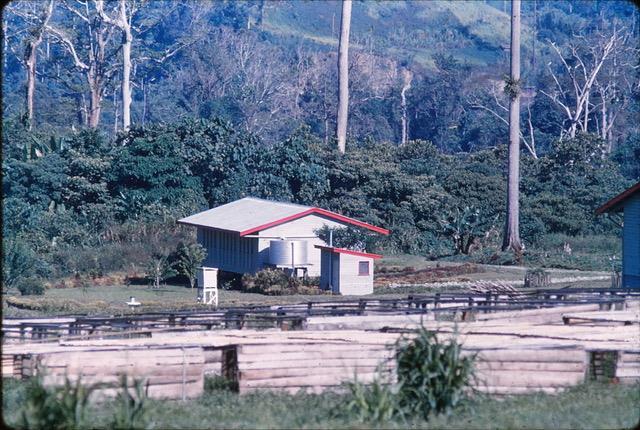
Wau Forestry Office and Nursery 1960. Photo credit Des Harries
Wau Nursery and temporary store building. Photo credit Des Harries.
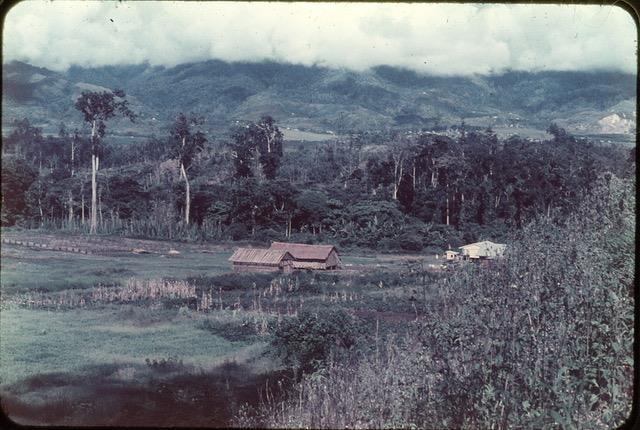
Commonwealth Department of Works undertook the construction of the permanent Forest Station structures. The first of these was the office building, followed by the tubing shed and the building used as the store and vehicle garage. A year later the residence for the Wau Forest Officer was built on this site as well as three married quarters for local officers. Des and June Harries with arrival of daughter Julia were the first occupants with no electricity. Electricity was connected to this site in 1962.Photo Credit Ian Whyte 1976.
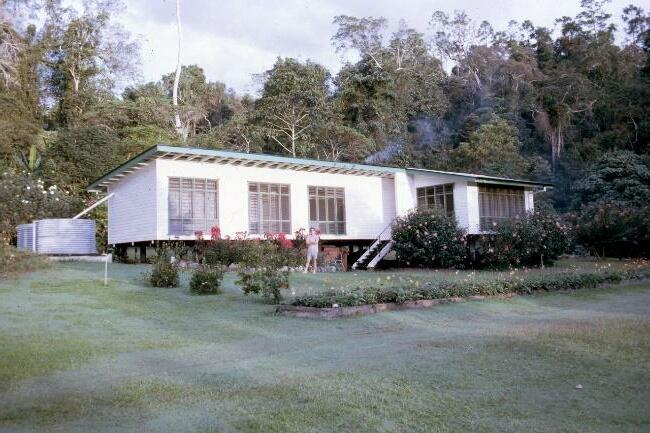
Road works continued to the west over the ensuing several years, providing eventually an alternative route from Wau to Bulolo to that of the old gorge road.
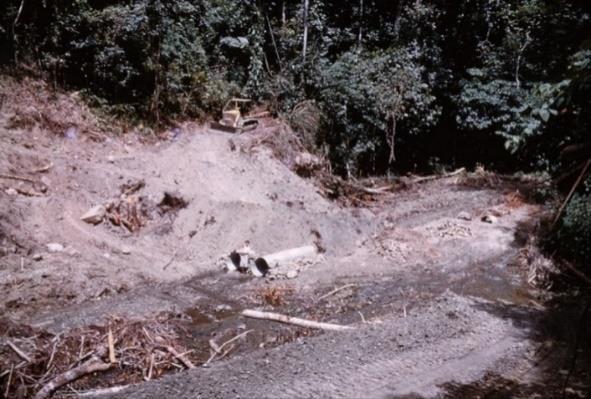
Sandy Creek Road crossing construction, 1961. Photo Credit Des Harries.
The progress of this roading program suffered a severe setback when it reached Sandy Creek. This problem was complicated by issues associated with so-called ‘native mining’
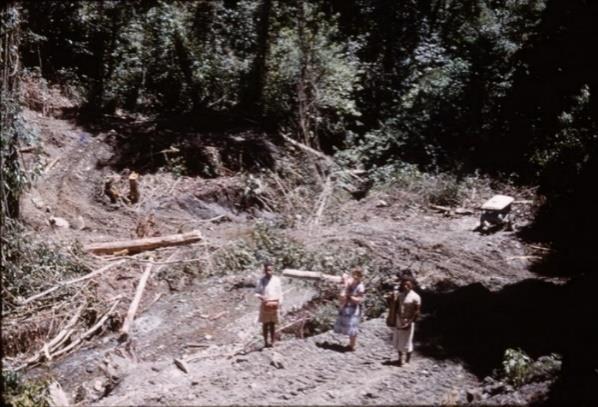
Work on the Sandy Creek Crossing, c.1961.
Photo Credit Des Harries.
A well-constructed pre-war water-race existed on the western side of Sandy Creek. It had been recently reactivated for the purpose of small-scale alluvial gold extraction at the junction of Sandy Creek and the Bulolo River.
Native mining operation near Sandy Creek, Wau, 1961. Photo Credit Des Harries.
In addition, a miner had decided to live at the Sandy Creek end of the Forestry Road. The road location which would have been shortest and cheapest to construct would have meant the destruction of the water-race. This was ruled as unacceptable. The Sub-District Officer also ruled that the miner should not be asked to relocate. The resulting solution involved cutting the road bench for the full distance along the
